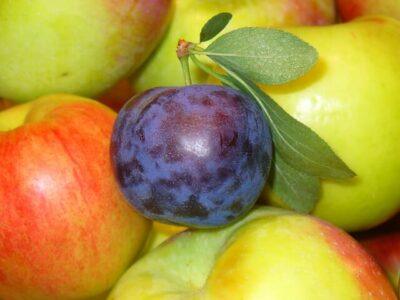The first day that you bring a fruit tree home from the nursery is an exciting one. Perhaps you’re imagining fresh, delicious fruit throughout the season. Maybe you’re already googling pie or jam recipes.
Too often, however, these trees end up with a lot of leaves and not much fruit – and it’s only then that many people ask themselves whether they should be pruning their tree.
Of course, pruning may not be the only issue at play here. You’ll need to know whether your tree needs cross-pollination or whether it is a self-pollinator. You’ll also need to have a bit of knowledge of caring for your tree with regular feeding and watering.
Which Trees Need Pruned?
The first thing you need to know is that not all fruit trees should be pruned on a yearly basis. Trees that do not require annual pruning include apples, pears, plums and cherries. This is because these trees produce their fruit on old wood.
It is only the older wood on these trees that develop stubby twigs called fruit spurs. These spurs take several years to develop and are a necessary part of fruit production.
The All-Natural Fertilizer That Can Double Your Garden Yield!
These types of trees should never be heavily pruned, although light pruning is sometimes required. For example, if your tree is becoming overloaded with fruit, some light pruning will help thin production. Also, because fruit spurs require lots of light to stay healthy, it is a good idea to thin out some of the upper branches so that they do not shade the spurs.
You also may want to do a bit of light pruning to help with the shape and overall health of these trees.
However, other types of fruit trees do require yearly pruning, and these include apricots, peaches and nectarines. These trees will only bear fruit on wood that is one year old. When you are pruning these types of trees, you should cut back the older branches to encourage new growth.
When Is the Best Time to Prune?
Knowing when to prune your fruit trees can be a challenge, because there seem to be so many opinions on it. The truth is that there are several good times during the year to prune, and the time you choose will depend on what your goals are for your tree.
Winter pruning — The best time to do any heavy pruning or shaping is in late winter, after the tree is dormant for the season. This is because when the tree is out of dormancy, it will require all of its energy for new growth and fruit production.
Spring pruning — Spring pruning is a lighter pruning and should only be done after the fruit has set. Think of this more as thinning than pruning. By this type, you will be able to clearly see which branches are producing fruit and which are not, so you won’t have to worry about cutting off productive branches.
Additionally, if you are growing dwarf trees, light pruning will help to keep them more compact.
Summer pruning — By summer, your fruit tree will be in full leaf and it will be very easy to see if any branches have died over the winter. These should be removed to make way for new growth. The only live growth you should remove during the summer season are suckers that can grow from the root stock and divert the tree’s energy from fruit production.
Corrective pruning
If you have a fruit tree that has been neglected for a few years, you may notice that it has become overly bushy and does not produce good quality fruit. In order to get such a tree back to its peak performance, extreme corrective pruning will be needed.
The goal of such pruning will be to thin out the branches so that the remaining branches will receive proper air circulation and sunlight. In some cases, it is advisable to stretch out corrective pruning over two to three seasons.
Growing your own fruit trees can be an incredibly rewarding pastime, and understanding whether and when to prune is one of the main keys to helping ensure that your tree produces fruit year after year.
What advice would you add on pruning? Share your tips in the section below:
 Off The Grid News Better Ideas For Off The Grid Living
Off The Grid News Better Ideas For Off The Grid Living





